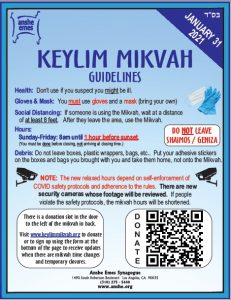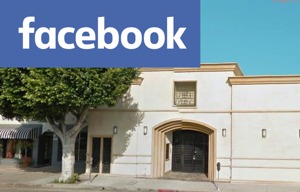INTRODUCTION
Yom Kippur, the tenth of Tishri, is the holiest day on the Jewish calendar and the culmination of the Ten Days of Teshuvah. On Yom Kippur, Moshe came down from Mt. Sinai bearing the second tablets, after G-d had forgiven Israel for the sin of worshipping the Golden Calf. This act of Divine pardon marked Yom Kippur for all time as the Day of Atonement and reconciliation with G-d. For on this day G-d purifies us from our errors, forgives our missteps and turns His ears to our pleas. As the Torah states, “through this day, [G-d] will atone for you, to cleanse you from all your sins; before G-d shall you cleanse yourselves.” (Leviticus 16:30). Yom Kippur also commemorates, Rabbi Eliezer teaches, Abraham circumcising himself at G-d’s request. Abraham’s remarkable act symbolizes the quintessential human drive to refine and perfect ourselves, to transform our physical bodies and drives into uplifted spiritual vessels.
THE FIVE AFFLICTIONS OF YOM KIPPUR
On Yom Kippur, we are required to abstain from five forms of physical pleasure: (1) eating and drinking; (2) washing and bathing; (3) applying oils or lotions; (4) wearing shoes containing leather; and (5) marital relations.
The five afflictions correspond to the five books of the Torah (which we accept without being deterred by our physical pleasures); to the five senses (with which we keep the commandments or, G-d forbid, commit transgressions); to the five times that the term nefesh (soul) is mentioned in the Yom Kippur Torah reading; to the five immersions of the Kohein Gadol (High Priest) on Yom Kippur; and to the five services ordained for Yom Kippur (Maariv, Shacharit, Mussaf, Minchah and Ne’ilah).
By fasting on Yom Kippur, we resemble angels, who have no natural functions and continually sing hymns of praise to G-d. (As the Maharal of Prague writes, “all of the mitzvahs that G-d commanded us on [Yom Kippur] are there to remove, as much as possible, a person’s relationship to physicality, until he/she is like an angel.”) Rabbi Simpson Raphael Hirsch explains that by giving up life’s physical pleasures and refraining from work on Yom Kippur, we are living for 24 hours as if we were dead, thereby affirming that this is the fate we deserved if G-d had not granted us forgiveness for our past. Without G-d’s gift of atonement, we would have forfeited both our right to live (symbolized by the five afflictions) and our right to create (symbolized by the work prohibition).
Throughout the year, many of us spend our days focusing on almost nothing else besides food, sex, work, superficial material possessions (symbolized by our shoes) and superficial pleasures (symbolized by anointing). On Yom Kippur, we restore our priorities to what really counts in life.
TESHUVAH
The indispensable condition for attaining atonement is teshuvah, “repentance” (or “return”). It is G-d’s priceless gift to us, enabling us to rise after we have stumbled, to wipe the slate clean and return to G-d after we have gone astray. It is a positive commandment to repent before Yom Kippur, as the verse (Vayikra 16:30) states “Purify yourselves before G-d.” Chazal teach that teshuvah came into existence before the world was created; that is, even before Creation, G-d envisioned the possibility that we would commit evil and provided us the remedy of teshuvah, through which we can be reconciled with our Creator.
The Talmud (Yoma 86a/b) teaches that teshuvah is so magnificent that it has the potential of propelling the baal teshuvah to the immediate nearness of G-d (in fact, as close to G-d as the Heavenly throne). Teshuvah further brings healing to the entire world, and advances the redemption.
In doing Teshuvah, we should be especially careful to first rectify those matters that concern interpersonal relationships, for in such matters neither Yom Kippur or even death can atone until we undo the wrong done to others. We must first obtain our fellow human beings’ pardon, whereupon all that remains is between us and G-d (and, for this, Teshuvah avails).
KOL NIDRE
Kol Nidre, the introduction to the Yom Kippur service, dates back to sixteenth-century Spain. The Kol Nidre is a declaration by which personal vows are cancelled (it is recited before sunset since it contains a formula for the repealing of general vows and we do not absolve vows on Shabbos or Yom Tov). Kol Nidre impresses upon us the seriousness with which the Torah views both the fulfillment of one’s commitment and the keeping of one’s word. In Kol Nidre, we make this statement: “I realize that if I have made any verbal commitments, if I gave my word on anything, then without recourse to some higher authority there is no backing out. My word is my word – period. My word locks into place a reality that I can no longer undo. That reality – that word – binds me.” On Yom Kippur, “we take a searing look inside. We ask ourselves – who can count on my word? Can my children? My spouse? My friends? My boss? Can G-d? Can I? Without credibility, we have nothing. With it – we have everything.” During Kol Nidrei, the Aron Hakodesh is left open to indicate that the Gates of Teshuvah are always open.
VIDDUY (THE CONFESSIONAL PRAYER)
The two principal themes of Yom Kippur – Teshuvah and Vidduy (confession) are inextricably linked; the penitent must verbally confess sin. The Vidduy is said in plural because all Jews are responsible for one another (Shevuot 39a). The Vidduy is recited ten times on Yom Kippur, reflecting the Ten Commandments which we violated. The sins in the Vidduy appear in alphabetical order as a memory aid and to rectify the effects of our misdeeds on the 22 sacred letters with which the Torah was written. The question is often asked, “it is fitting to recount our sins when we stand on the holiest of days before our holy and awesome King?” “Doesn’t this litany merely ‘soil’ us before Hashem as we await Judgment?” The very opposite is true! Hashem rejoices when we expel the impurities within us. While we see only the external in others, G-d looks to the innermost recesses of our heats to search for purity; there He finds joy even if his palace is dirtied when we cast off our sins.
WHITE GARMENTS/KITTEL
It is customary to wear white garments on Yom Kippur, in emulation of the ministering angels. Many men wear a kittel, a white robe worn over clothing. The kittel, which is similar to the burial shroud, reminds us of our mortality and the need for teshuvah. Also, the kittel does not have any pockets, reminding us that when we depart this world, we are accompanied only by our good name (and not by our material possessions). The white kittel symbolizes the idea that by forgiving us, Hashem washes away and whitens our sins, as it says, “”Be your sins like scarlet, they will become white as snow (Yeshayah 1:18).” And, the white kittel causes us to resemble the Kohen Gadol, who performed the Yom Kippur service wearing white garments.
YIZKOR
Our Sages ordained that children should remember the souls of their departed parents when praying on the Festivals. At that time, they should pledge charity on behalf of the departed souls, to serve as a source of merit and enable the souls to ascend even higher. This prayer, Yizkor, is recited on Yom Kippur (it is also recited on the last day of Pesach, Shavuos and on Shemini Atzeres). The Yizkor prayer is considered to be of greater significance on Yom Kippur, for the very essence of the day is the quest for mercy, forgiveness and atonement, which are necessary for both the departed and living. Moreover, their children observing mitzvos and giving charity after they have departed shows that the parents’ strength endures through their children’s deeds, and it is as if the parents were still living and practicing such acts.
TORAH/HAFTORAH READINGS
The Torah reading for Yom Kippur differs from that of all the other Festivals: 6, not 5, men are called to the Torah; plus, three men are called up at Minchah (the afternoon service) as on a Shabbos (but not as on the other Festivals).
The Torah reading for Shacharit relates to the High Priest’s Yom Kippur Service in the Tabernacle and Temple. The first verse mentions the death of Nadav and Avihu, which is a powerful call for us to do teshuvah. The Haftorah from Isaiah exhorts us to demonstrate the sincerity of our fast by “sharing our bread with the hungry and taking the wretched poor to our home.” The Torah reading for Minchah, which deals with incestuous and other forbidden sexual relationships, reminds us to avoid being complacent even when we have reached a high level of holiness; if we are not constantly on guard, we can be overcome by our passions and ensnared by temptation. The Haftorah, from the Book of Jonah, demonstrates that sincere teshuvah can revoke even the harshest decree of G-d.
NEILAH (THE CONCLUDING SERVICE)
As you begin Neilah, “Ask yourself – if I could accomplish only one step of growth today, what would it be? Neilah is the time to make sure that if you achieve nothing else – though you surely will – that at least one step of growth will now become a lasting part of who you are. Who you will forever be.” It is customary to blow shofar immediately after Neilah – the blowing of the shofar is symbolic of freedom, for on Yom Kippur the soul has been freed from its sins, and body has been liberated from punishment.
TWO PARTING STORIES
It’s Not Too Late. Rav Yisroel Salanter once went to a shoemaker to have his shoes repaired. The hour was late and darkness had already descended. Noticing that the candle by which the shoemaker was working was burning out, Rav Salanter suggested that he perhaps could wait until the next day to fix the shoes. “Do not despair,” the shoemaker replied. “As long as the candle burns, it is still possible to fix the shoes.” As long as the spark of life still flickers in us, we can still repair our ways.
Utilize the Moment of Light. The legend is told of two people – one wise and one foolish – who were lost in the forest on a moonless night. They wandered for hours, seemingly only going deeper and deeper into the woods. Suddenly, a flash of lightning as bright as the sun lit up the sky. The fool gaped in wonderment, while the wise one used the moment of light to gain his bearings and discover the route out of the forest. Yom Kippur is like that flash of lightning. May the effects illuminate our year, and our lives for years to come.




 Visit the group and request to join.
Visit the group and request to join.
